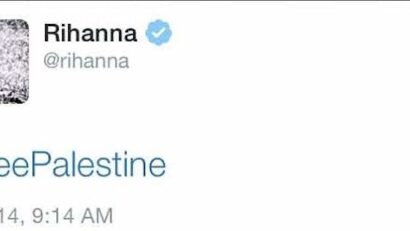
The budget has earmarked $8.6 million for live music. Is it enough to save the flailing industry?
Leading music organisations have praised the federal budget for its investment in the live music sector.
The budget includes A$8.6 million for a program called Revive Live:
to provide essential support to live music venues and festivals showcasing Australian bands and artists – to ensure the long-term sustainability of the live music sector.
This investment builds on the Revive national cultural policy introduced last year.
Music was clearly a priority for Revive, with the creation of Music Australia, a dedicated body inside Creative Australia, “to support and invest in the Australian contemporary music industry”.
The money included in this week’s budget shows the government has been paying attention to issues in the live music sector.
The House of Representatives is currently considering submissions to a parliamentary inquiry into the Australian live music industry. It comes hot on the heels of a call by a Senate inquiry into Revive for urgent funding for festivals and live music.
But will this new investment be enough to save an industry in crisis?
Australian live music industries in crisis
Multiple festivals have been cancelled over the last year, due to factors such as increased operational costs, sluggish ticket sales, risks from extreme weather, and changing audience behaviours.
Live music venues are in jeopardy. Beloved venues like Brisbane’s The Zoo have closed their doors. Others continue to be threatened by residential development.
The potential sale of Melbourne’s iconic Tote Hotel to developers last year was avoided only because music fans crowdfunded $3 million to save the venue. Other small venues have turned to crowdfunding for compulsory soundproofing or simply to continue operating.
Fans crowdfunded $3 million to save the Tote in Collingwood in Melbourne.
Diego Fedele/AAP Image
Musicians see little financial reward for their labour. Many are walking away from the sector.
Industry bodies are concerned skills shortages in live music production and touring crews, following pandemic-related departures, will lead to further cancellations.
In such a fragile environment, an extra $8.6 million could make a big difference on the ground. However, the budget documents have not outlined the specifics of how this money will be spent.
The documents dedicate this money in 2024–25 for:
support to live music venues and festivals showcasing Australian bands and artists, including to improve accessibility and inclusion at live music performances.
The question then becomes what strategies and initiatives will Revive Live prioritise?
How can the extra money help?
Bold thinking is required, for both how this money could be allocated and what legislative change could help the sector.
Targeted funding may help to ease the pressures of increasing insurance, property and maintenance costs for our struggling – but essential – small venues.
We can look internationally for new models of venue ownership. In the United Kingdom, Music Venue Properties is a charity that crowdsources funding to collectively buy small venues.
Revive Live could assist venues to buy their freeholds in collaboration with community groups and local councils. This would reduce overheads and bring in further community oversight and involvement. Programs like this offer alternative models for engaging with contemporary music that do not rely on alcohol sales.
Capping public liability insurance for promoters and venues would also ease pressures.
Funding for venues could be conditional on minimum pay for musicians.
James Ross/AAP Image
Funding could also be used to drive desired changes to the culture of the industry.
Music Victoria’s 10,000 Gigs initiative provides venues with up to $10,000 a year to cover artist fees, where each performer must be paid a minimum of $250 per performance. This ensures artists are paid, while supporting venues to program talent and attract audiences.
The budget’s intention to “improve accessibility and inclusion at live music performances” responds to urgent needs, including access for people with disabilities, and gender-based violence and harassment at events. New funding should be conditional upon reaching KPIs in these critical areas, ensuring diversity and inclusion – including, vitally, among performers on stage.
Other significant reforms could include levies on big-ticket events with revenue redistributed to grassroots music venues, laws guaranteeing international performers include an Australian artist among their opening acts, and local content or “bannerhead” quotas for streaming platforms to ensure they promote Australian artists to Australian audiences.
The live music sector contributes an estimated $5.7 billion to the Australian economy. Although the budget’s $8.6 million isn’t a lot when compared to the size of the industry, if accompanied by targeted structural reforms it could be the seed funding needed to begin a process of transition and renewal.
No doubt this process will be heavily informed by the current parliamentary inquiry. Its outcomes may have serious implications for the sector’s long-term viability.
Ultimately, the sustainability of the live music sector requires fundamental adaptations to the way business has been done in the past. Audience behaviours are changing and new technologies continue to disrupt the industry. Revive Live may be an important and positive step in the right direction if it is used effectively. Läs mer…
